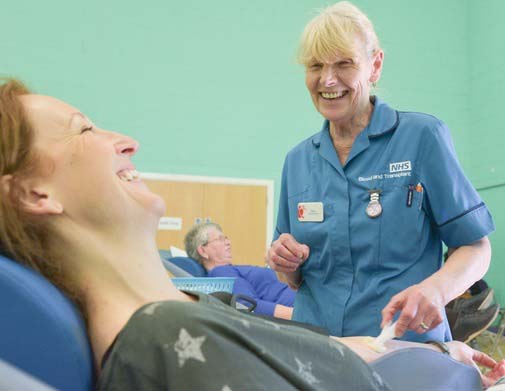Why waiting 16 weeks is better for women
We explain why women need longer intervals between donations
 We have been fine-tuning the intervals at which donors can give blood for several years. Back in 2012, we amended our IT systems to allow us to invite men to donate every 12 weeks. The trouble was that the system couldn’t distinguish between male and female donors and so women were able to book appointments online with the same frequency.
We have been fine-tuning the intervals at which donors can give blood for several years. Back in 2012, we amended our IT systems to allow us to invite men to donate every 12 weeks. The trouble was that the system couldn’t distinguish between male and female donors and so women were able to book appointments online with the same frequency.
This is not ideal, because, as we explain below, women are different when it comes to how often they should donate. So, we are updating our systems to allow us to distinguish between the 16-week donation interval for women and the 12-week interval for men. Once these changes have been made, female donors will no longer be able to book appointments online with less than a 16-week interval between donations.
Why it’s different for women
The reason for this change is to improve the safety of blood donation, and it relates specifically to lower iron levels in women. Blood is rich in red cells that contain haemoglobin - a protein that carries oxygen around the body. A key component of haemoglobin is iron, an essential dietary mineral.
When you donate whole blood you lose about 200-250mg of iron. In general, your body replaces that loss at the rate of only 1-2 mg per day (through dietary absorption) but this varies, depending on what your iron level was before donating, whether you’re taking any iron supplements, and whether your diet is iron rich.
Low iron causes anaemia, which can make you tired and lethargic, short of breath and cause heart palpitations. You can’t give blood if you have anaemia and should see your GP. Untreated anaemia can make you more at risk of illness and infection (lack of iron affects the immune system). It may also increase your risk of developing complications that affect the heart or lungs.
Iron levels in women
Some blood donors are more at risk of iron deficiency than others: younger donors, women of childbearing age and frequent whole blood donors. Replacing the iron lost by donation through diet alone can take a long time, especially with other concurrent losses (for example, menstruation in women). If you’re planning to become pregnant, it’s especially important that you build and maintain healthy iron stores to support the increased iron requirements of pregnancy.
Screening
We test your iron levels before you can donate to check they are adequate. There are different acceptable thresholds for male and female donors because women have lower iron levels and take longer to rebuild them.
The changes to our IT systems will be completed later this year. In the meantime, and to prevent disappointment at session, we are asking all female donors to only book appointments that allow for this 16-week interval.
Find out more about iron levels and blood donation.
